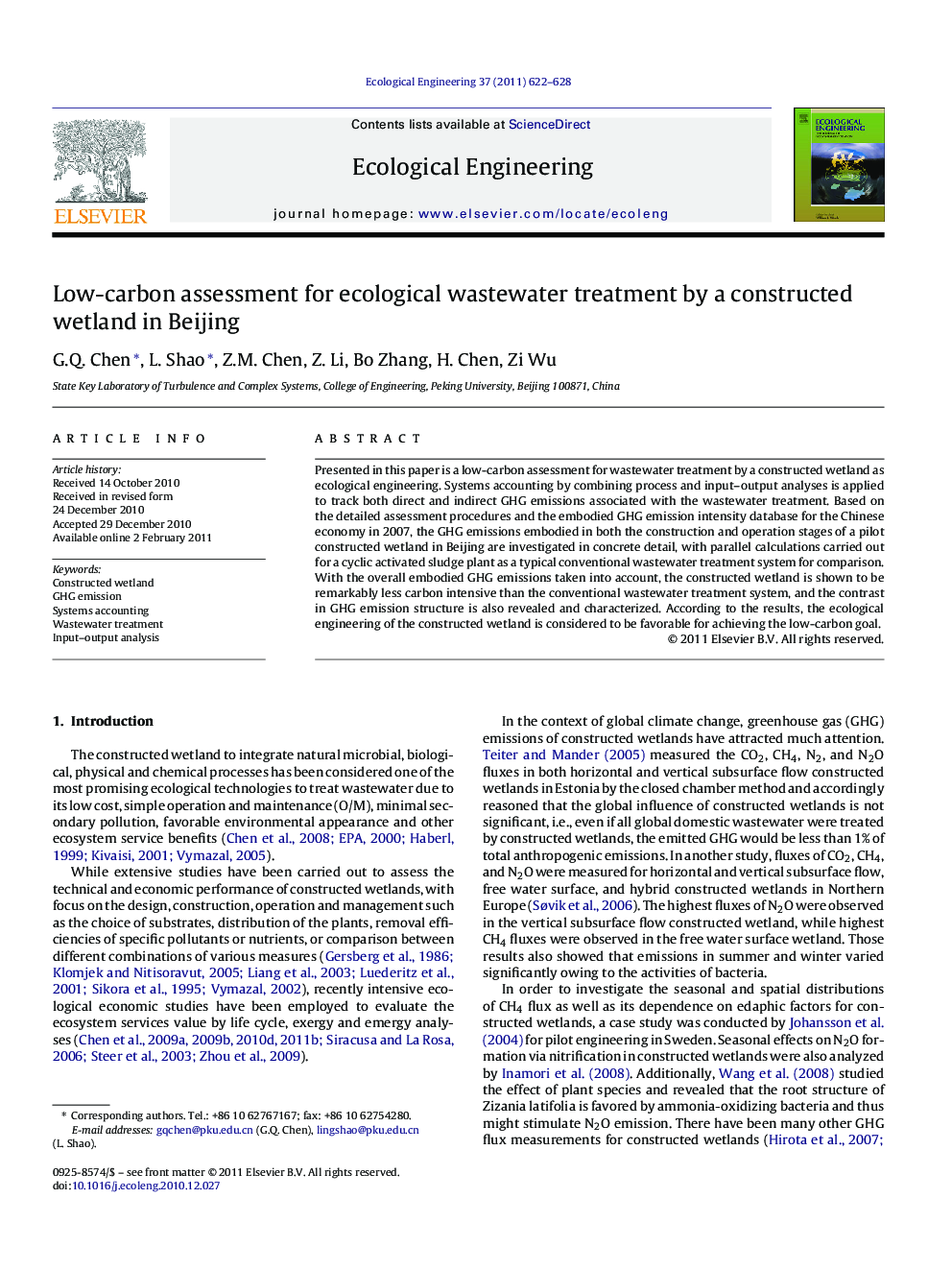| Article ID | Journal | Published Year | Pages | File Type |
|---|---|---|---|---|
| 4390300 | Ecological Engineering | 2011 | 7 Pages |
Presented in this paper is a low-carbon assessment for wastewater treatment by a constructed wetland as ecological engineering. Systems accounting by combining process and input–output analyses is applied to track both direct and indirect GHG emissions associated with the wastewater treatment. Based on the detailed assessment procedures and the embodied GHG emission intensity database for the Chinese economy in 2007, the GHG emissions embodied in both the construction and operation stages of a pilot constructed wetland in Beijing are investigated in concrete detail, with parallel calculations carried out for a cyclic activated sludge plant as a typical conventional wastewater treatment system for comparison. With the overall embodied GHG emissions taken into account, the constructed wetland is shown to be remarkably less carbon intensive than the conventional wastewater treatment system, and the contrast in GHG emission structure is also revealed and characterized. According to the results, the ecological engineering of the constructed wetland is considered to be favorable for achieving the low-carbon goal.
